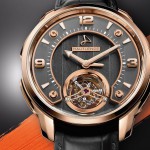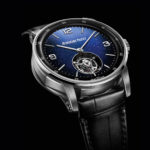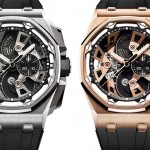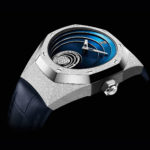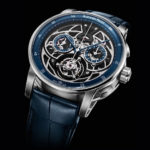In the decade starting in the early 2000s the tourbillon wristwatch was wildly popular and spiralling whirlwind (pun intended) of profit for watchmakers. Offering a tourbillon became a benchmark for any brand wanting to be a haute horlogerie marque. But well before that Audemars Piguet was already a preeminent watchmaker, with its accomplishments including the invention of the first automatic tourbillon wristwatch.
The first tourbillon wristwatches date from the thirties and forties, French watchmaker LIP is regarded as having made the first ever tourbillon for the wrist, the timepieces made then were prototypes rather than watches available commercially. Omega has a wristwatch-sized tourbillon movement from 1947 in its museum, from a series of movements made for observatory chronometer trials.
An old invention that only became wild popular recently, the tourbillon in wristwatch form only really came into being in the eighties. Many of the pioneers with tourbillon wristwatches were independent watchmakers. Franck Muller claims the first ever exposed, dial-side tourbillon with his 1984 wristwatch, signed “Franck” as his early watches all were. Daniel Roth, while working for Breguet and Nouvelle Lemania, was similarly bold with the tourbillon calibre he devised for the Breguet-Lemania firm.
The pioneering automatic tourbillon
Audemars Piguet debuted its self-winding tourbillon calibre 2870 in 1986. Not only was it the first self-winding tourbillon, it remains the lightest tourbillon ever, weighing just 0.134 g thanks to the tiny, titanium carriage. And at the time it was the slimmest, standing just 4.8 mm tall including the case.
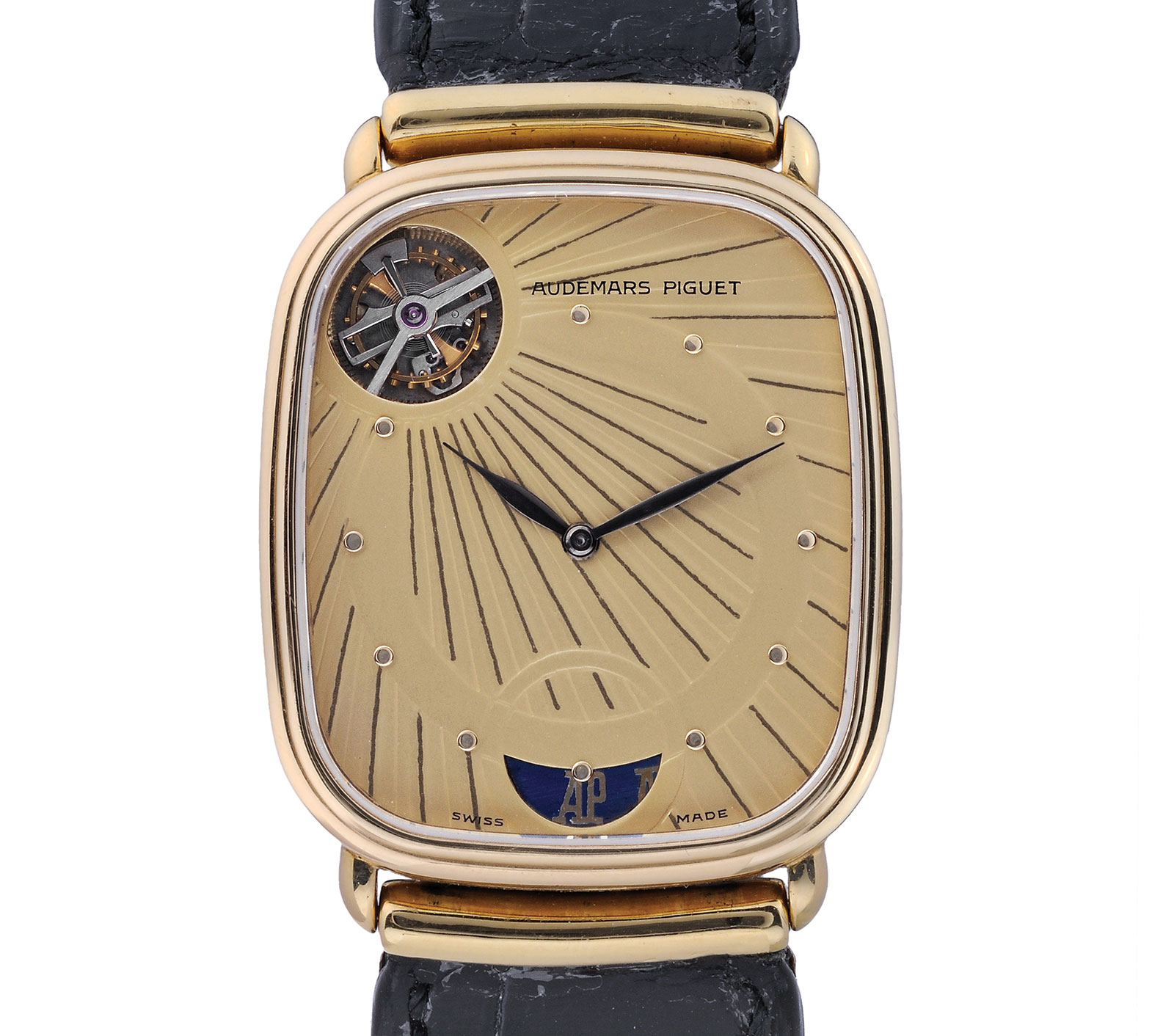 |
| The aperture at six o’clock reveals the AP logo on the hammer winding weight |
Most commonly seen in a distinctive oblong case with rounded corners and a sun ray dial finish, the automatic tourbillon was unique in several respects. For one it lacked a crown on the case sides, instead a flat crown was integrated into the case back. Its slimness was accomplished by integrating the movement into the case, a construction dating from the seventies. Combining the two allows for significant reduction in thickness, which is why this feature is also found in several other ultra-thin watches, including the Swatch Skin and recent Piaget Altiplano 900P. In the AP tourbillon the case back serves as the base plate of the movement, with the gear train and rotor mounted on the case back. Notably the bridges of the movement are solid gold, which might make this the first gold movement ever.
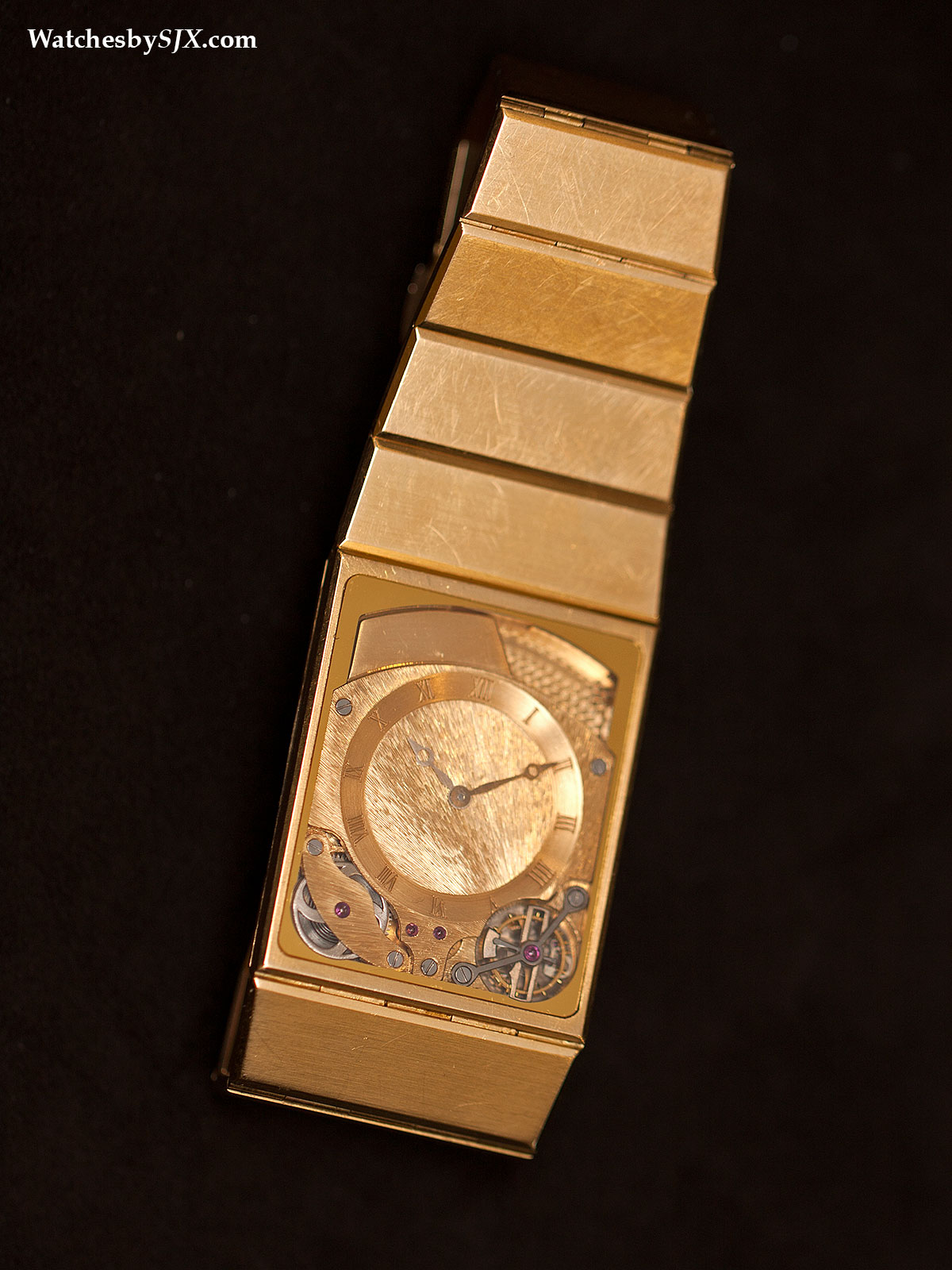 |
| A prototype of the automatic tourbillon |
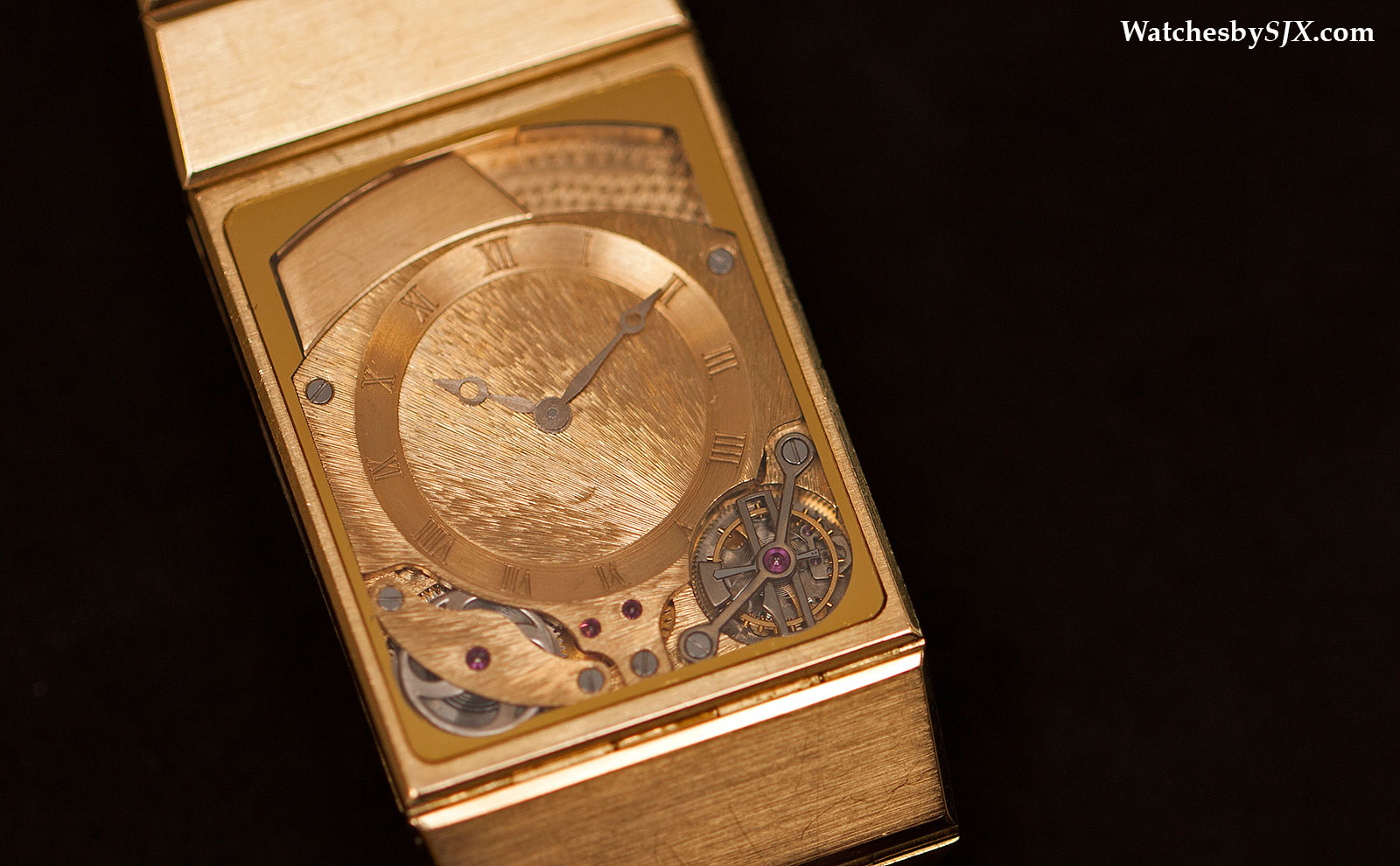 |
| The production model was inverted to put the tourbillon at 11 o’clock |
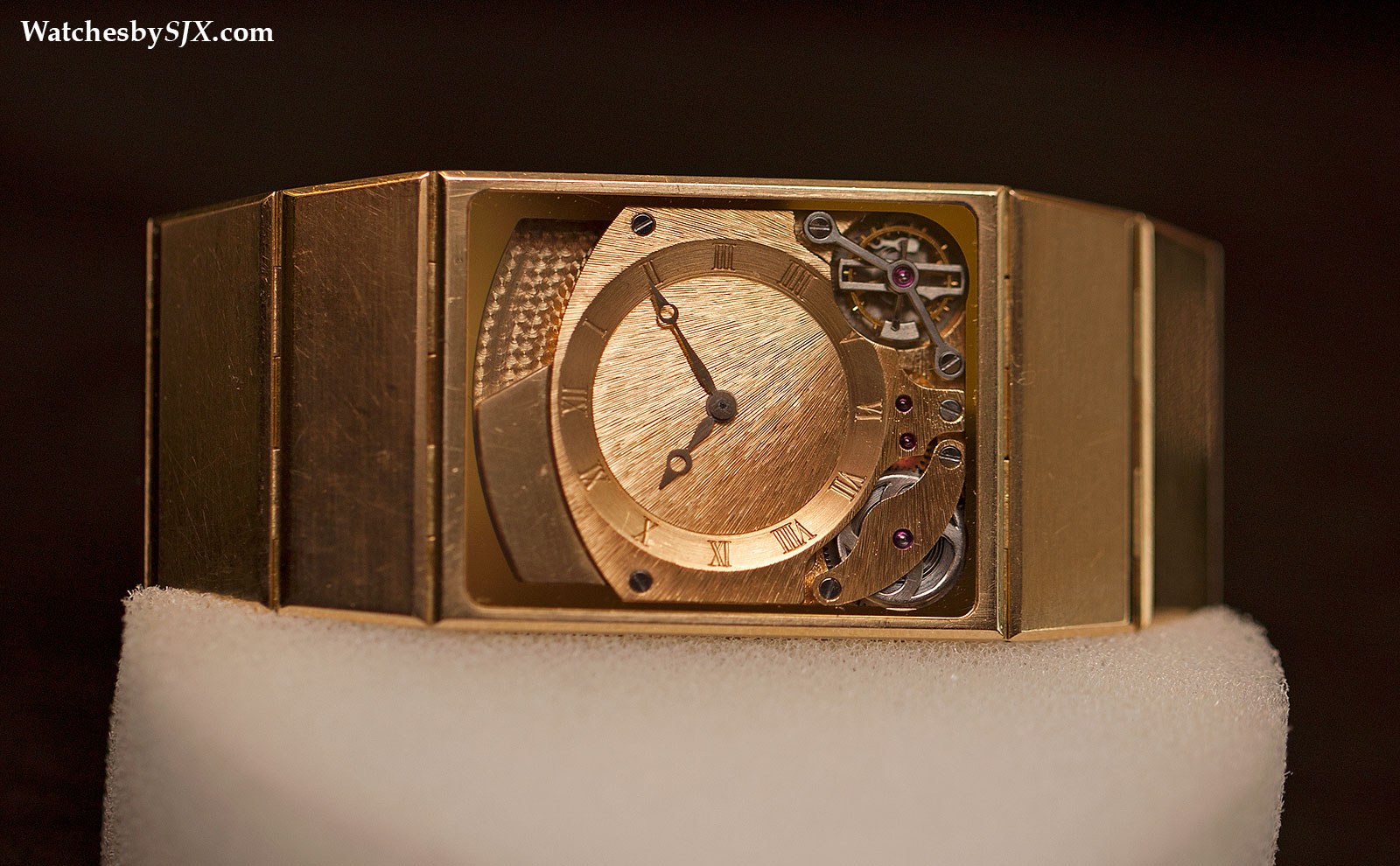
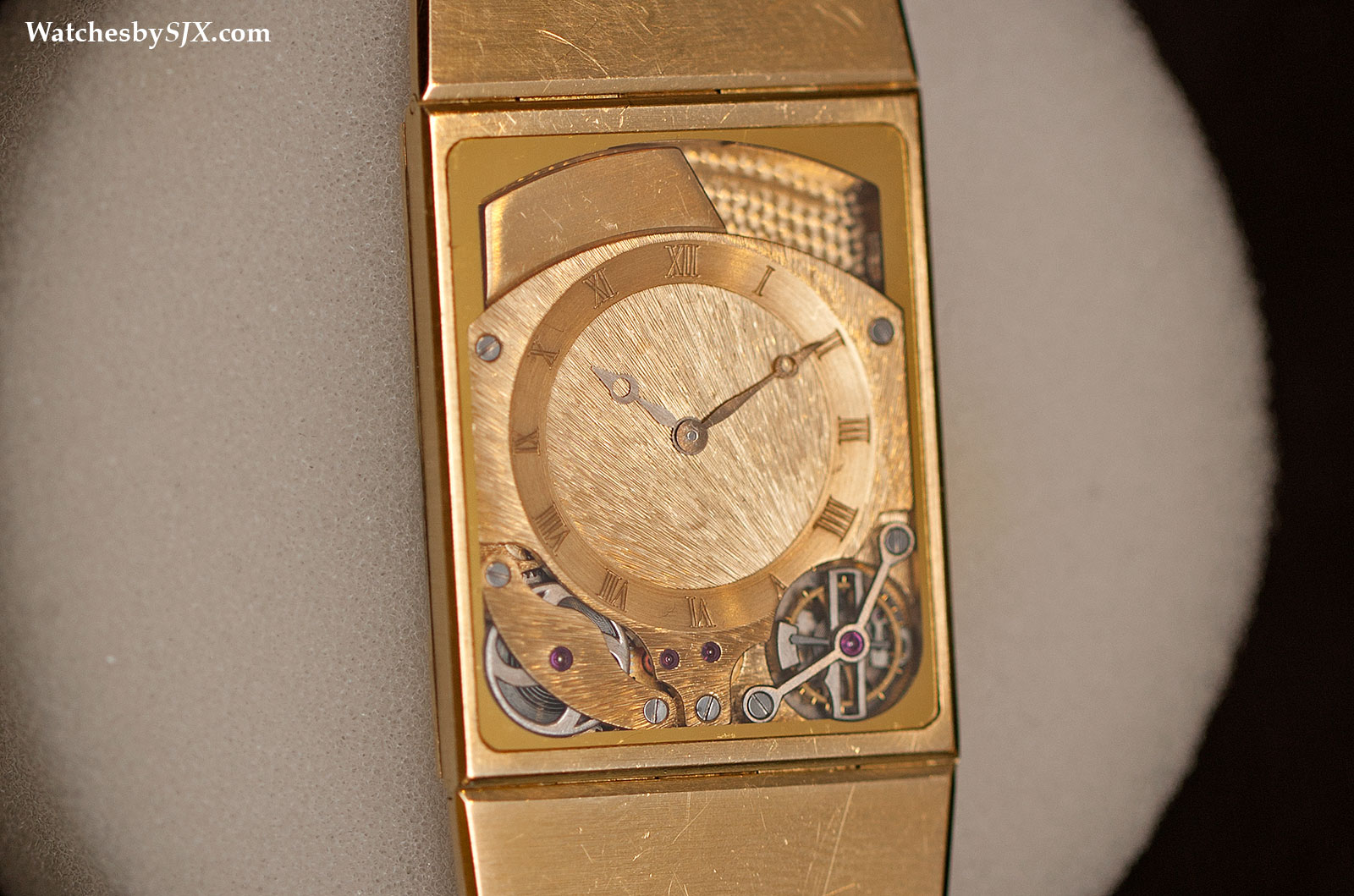 |
| The hammer rotor is visible at 11 o’clock |
Made of a heavy iridium-platinum alloy, the rotor was a swung from left to right, a mechanism known as a hammer automatic. Mostly found in early automatic timepieces, hammer automatic mechanisms are not particularly efficient, but they can be very compact, as demonstrated by this watch.
The evolution
Despite being ingeniously engineered and remarkably small, the first automatic tourbillon was not a commercial hit, being expensive and somewhat delicate. The movement lived on as the calibre 2875. Wider and thicker – the new calibre was 30% larger than the original – the 2875 was a far more robust movement that nonetheless retained the same hammer winding and hidden crown. And it featured the addition of a date and power reserve indicator.
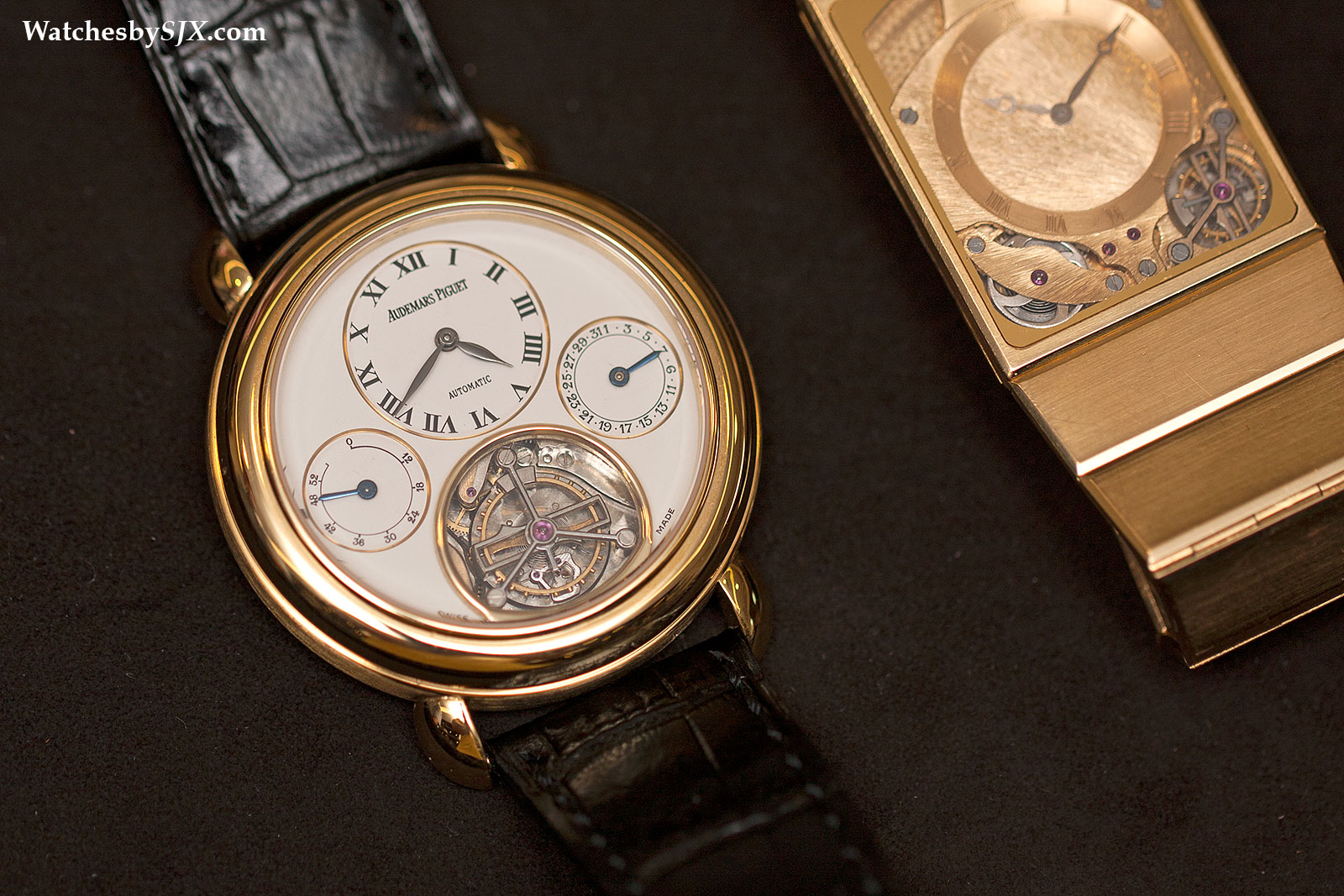 |
| The evolution of the original automatic tourbillon, the cal. 2875, circa 1991 |
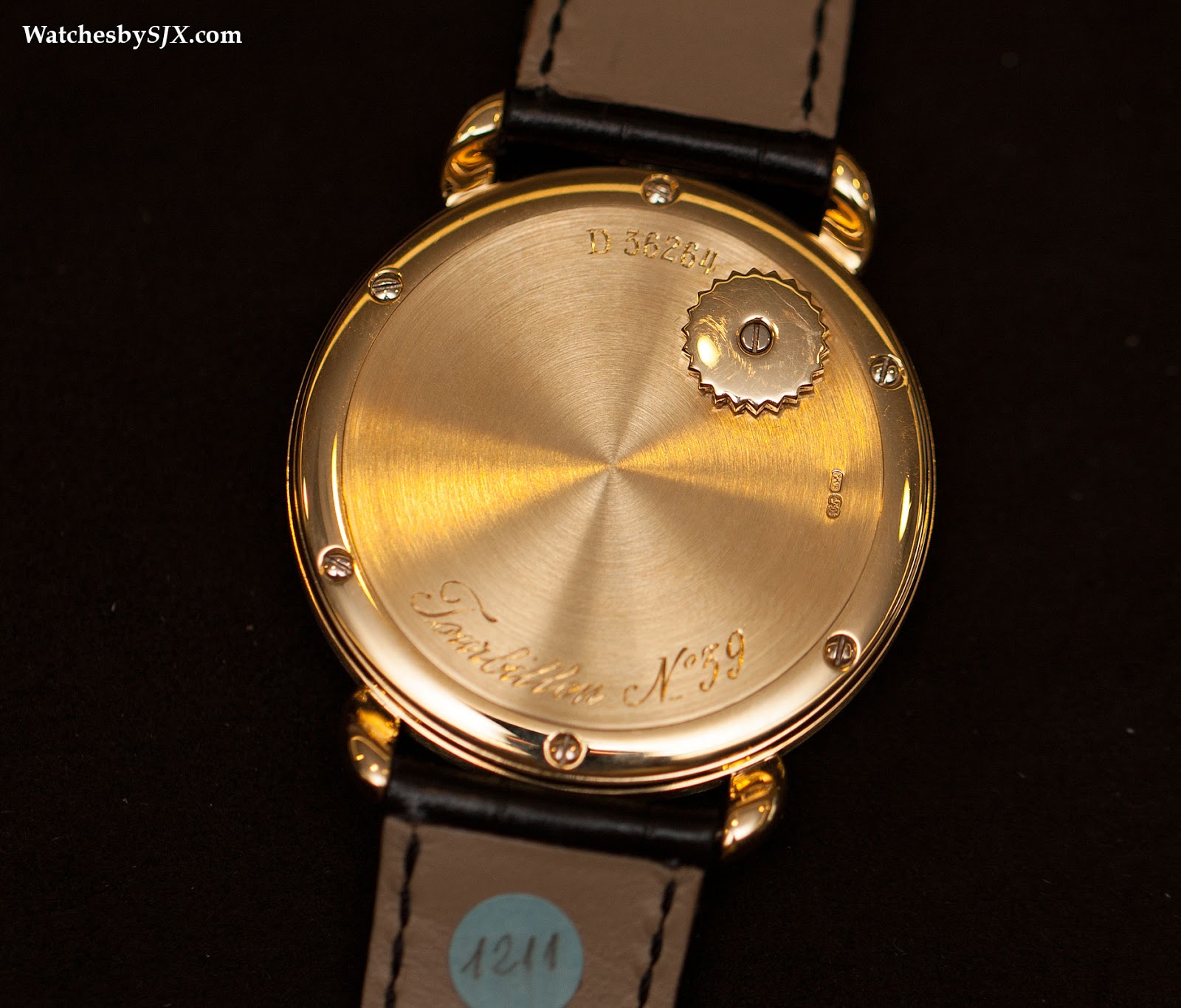 |
| Back-winding crown |
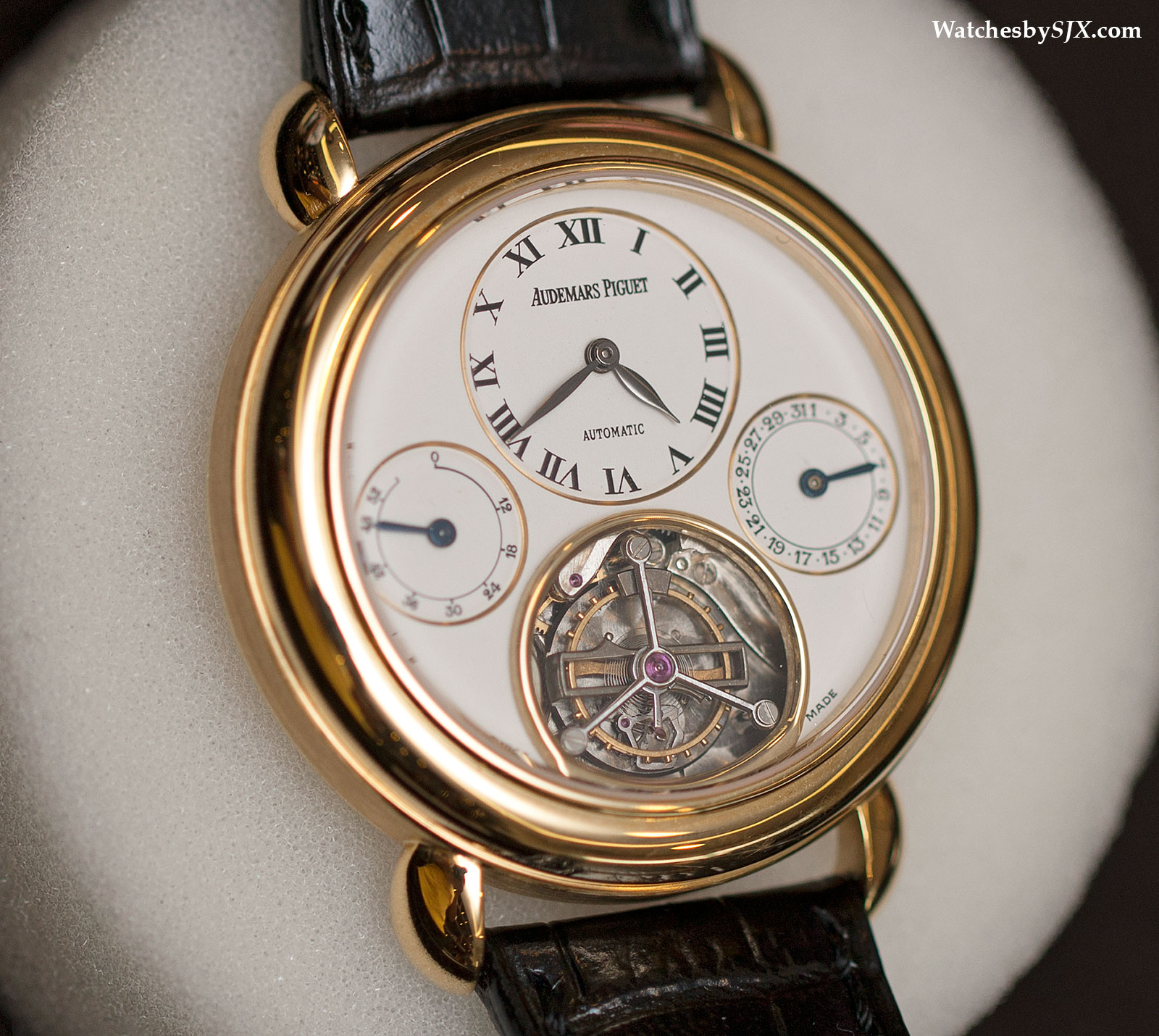 |
| The titanium cage remains similar in form, but larger |
The calibre 2875 was found in several models, including various Royal Oak tourbillons (the only Royal Oak watches ever without a crown), but is no longer in the collection. Instead it has been superseded by the tourbillon created by Renaud & Papi, the complications specialist AP acquired in 1992.
Renaud & Papi
Though the Renaud & Papi tourbillon cage was inspired by an old Vallée de Joux design, it is one of the most recognisable tourbillon cages made today. The three-spoke Renaud & Papi tourbillon is found in wristwatches from brands as diverse as Cartier (most often on the grand complication) and Richard Mille, which gets all its tourbillons from Renaud & Papi.
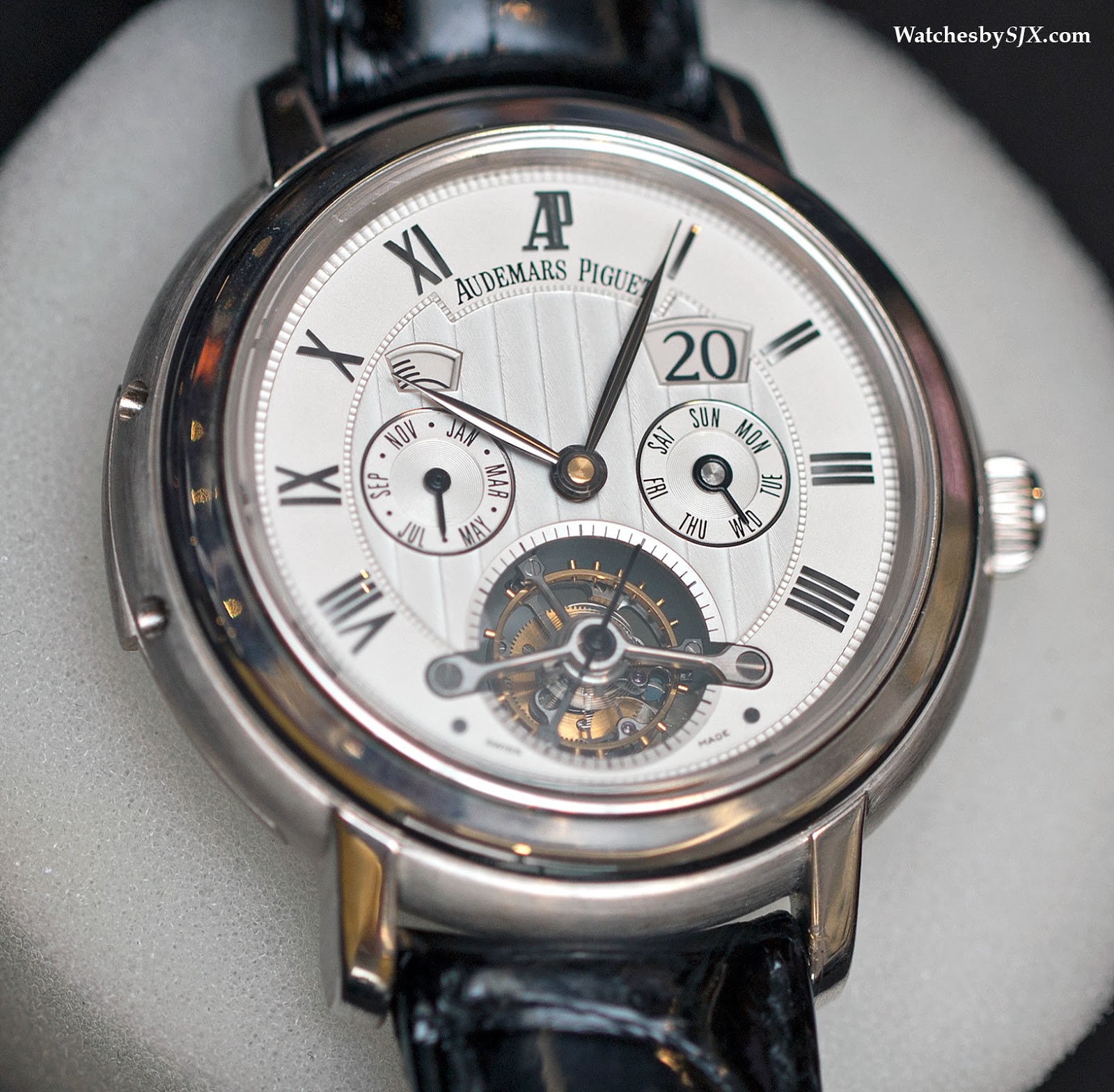 |
| Tradition d’Excellence No. 2, tourbillon with perpetual calendar and minute repeater |
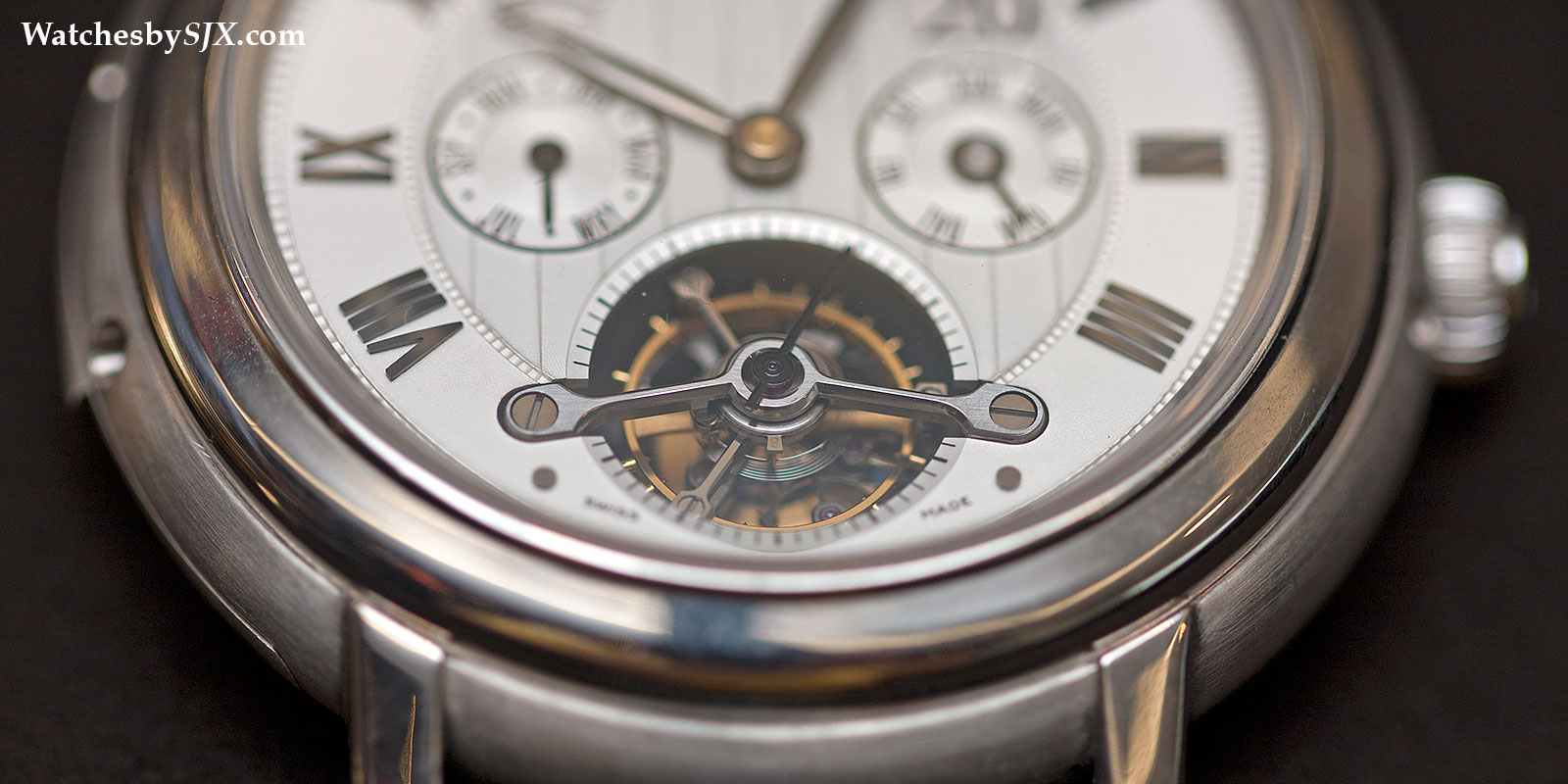
In Audemars Piguet watches the tourbillon typically has a slightly angled, inverted V-shape bridge, as found on the Tradition repeater-tourbillon.

Some intriguing variations have also been produced, including the wavy bridge of the Royal Oak Concept Watch 1.
.jpg)
And the successor of the first automatic tourbillon is probably the calibre 2897 in the Royal Oak Offshore Chronograph Tourbillon. This features a novel peripheral winding mechanism, with the rotor sitting on the rim of the movement so as not to obscure any part of it.
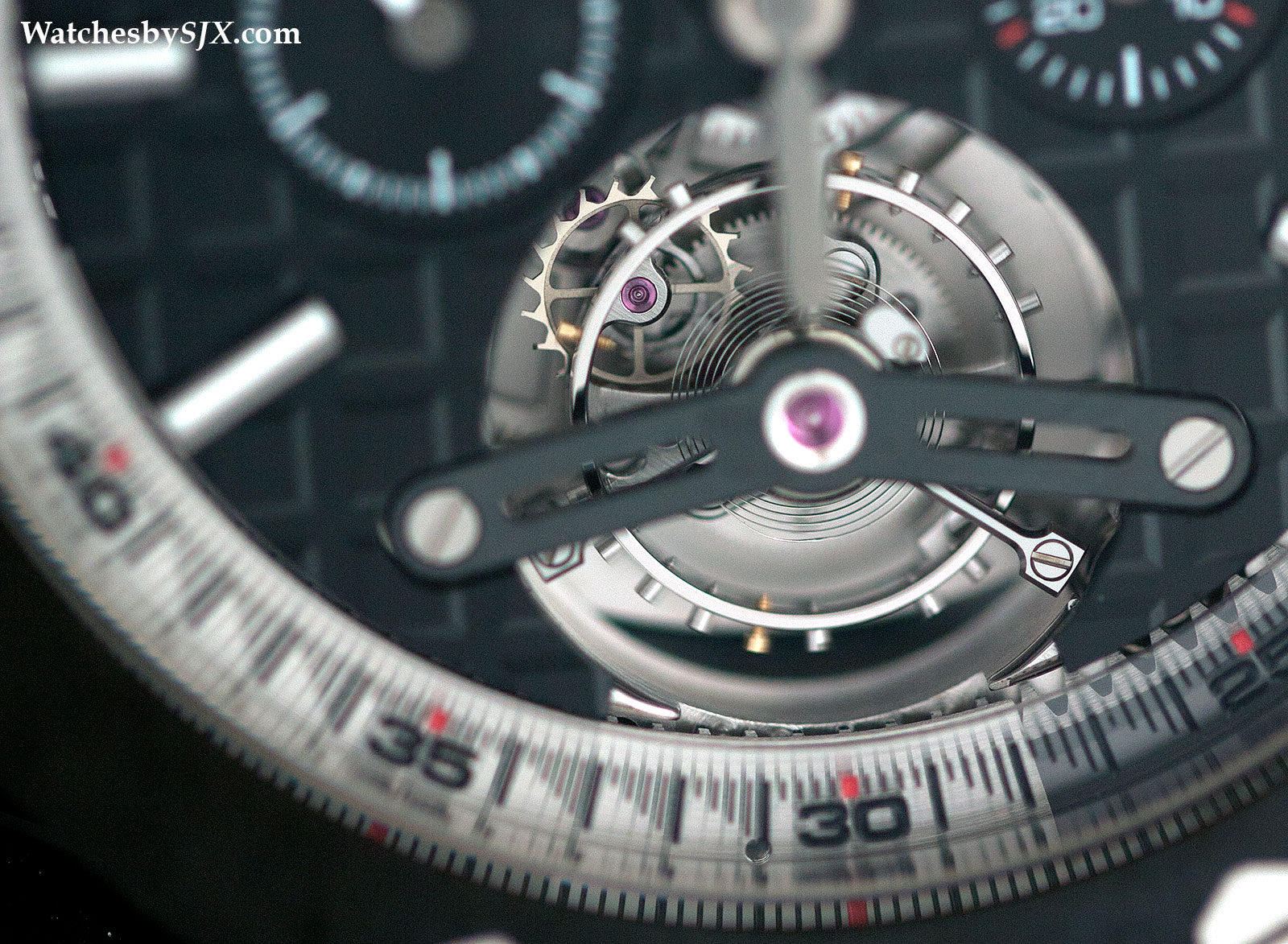
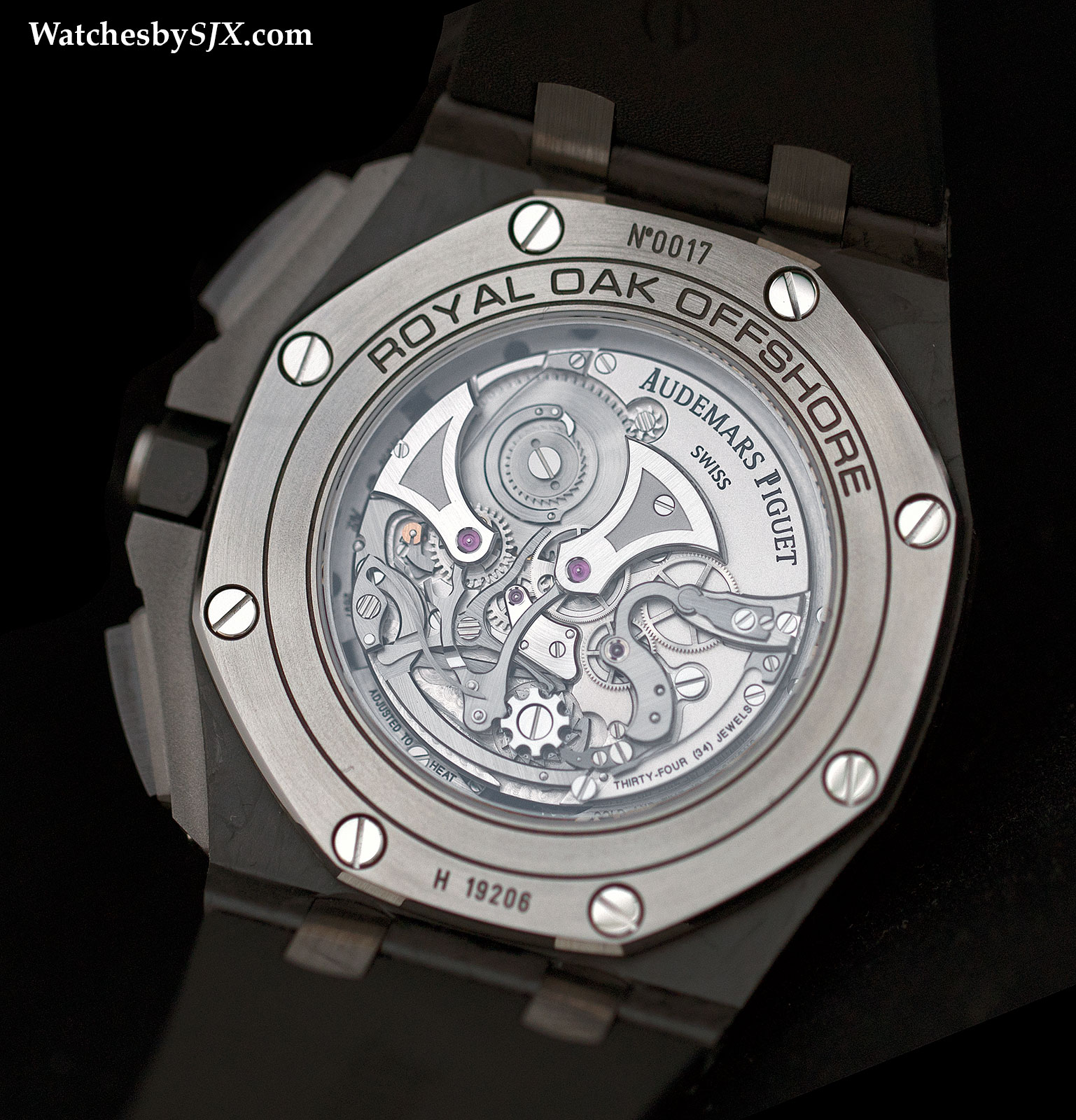
Back to top.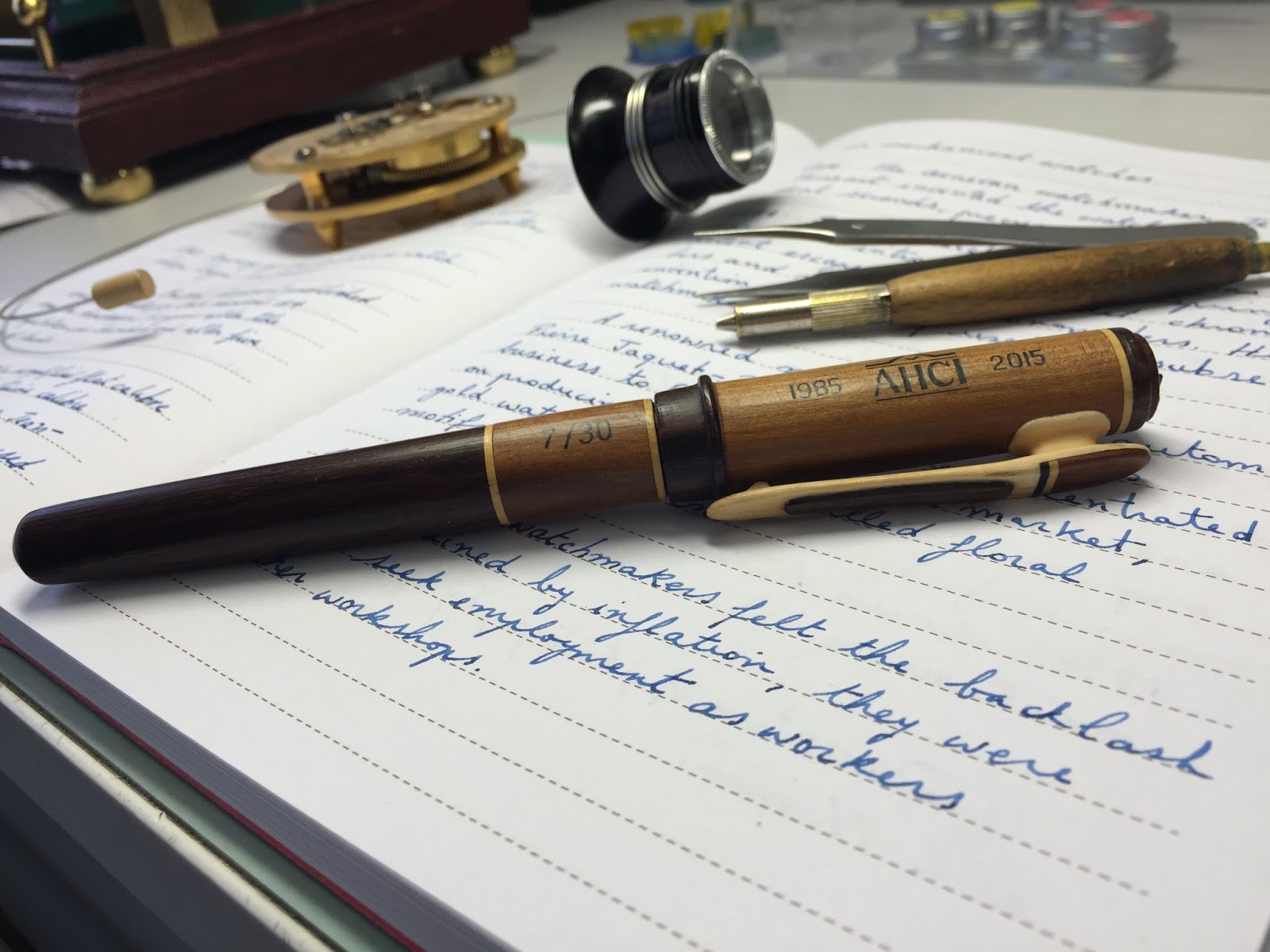

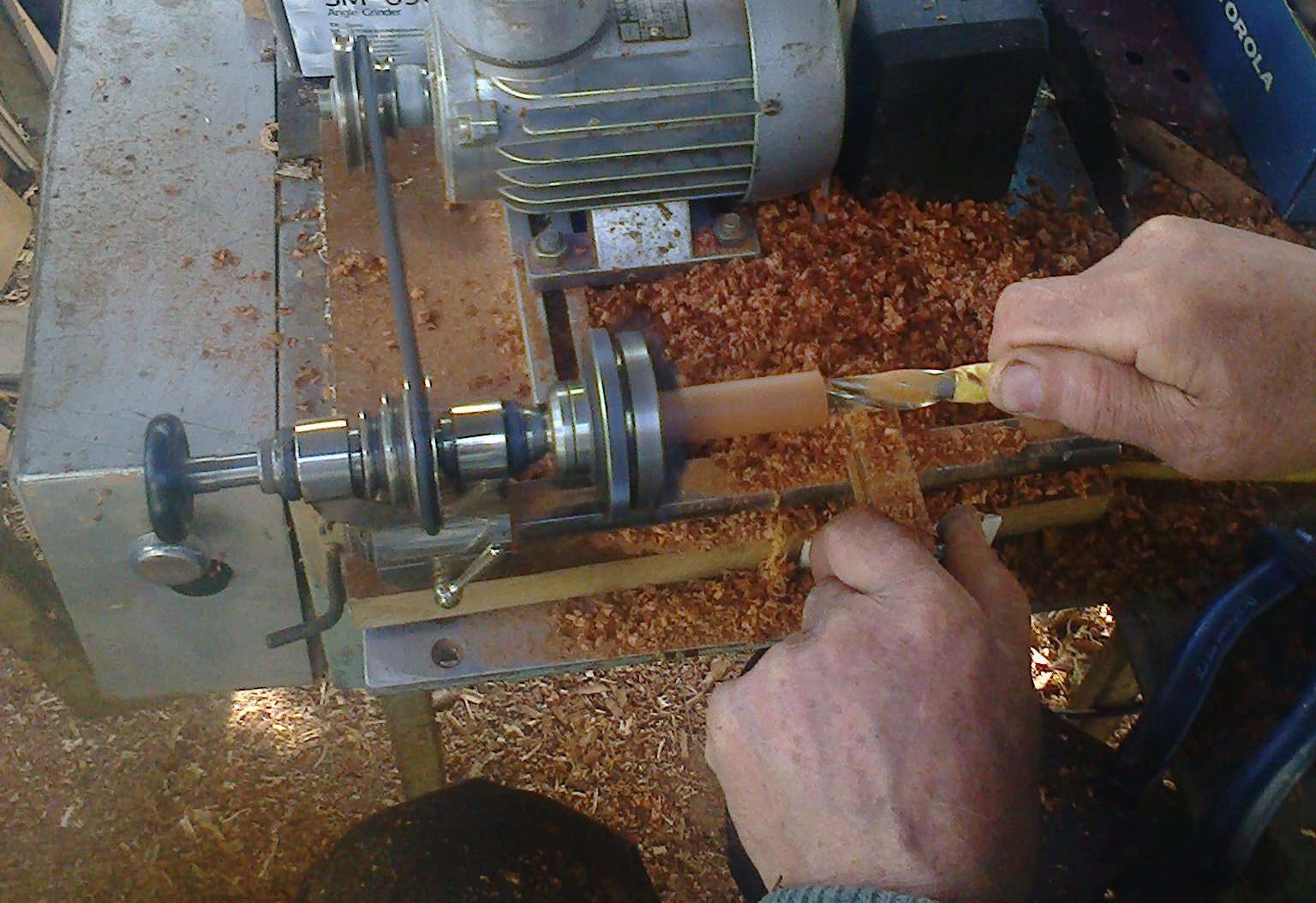
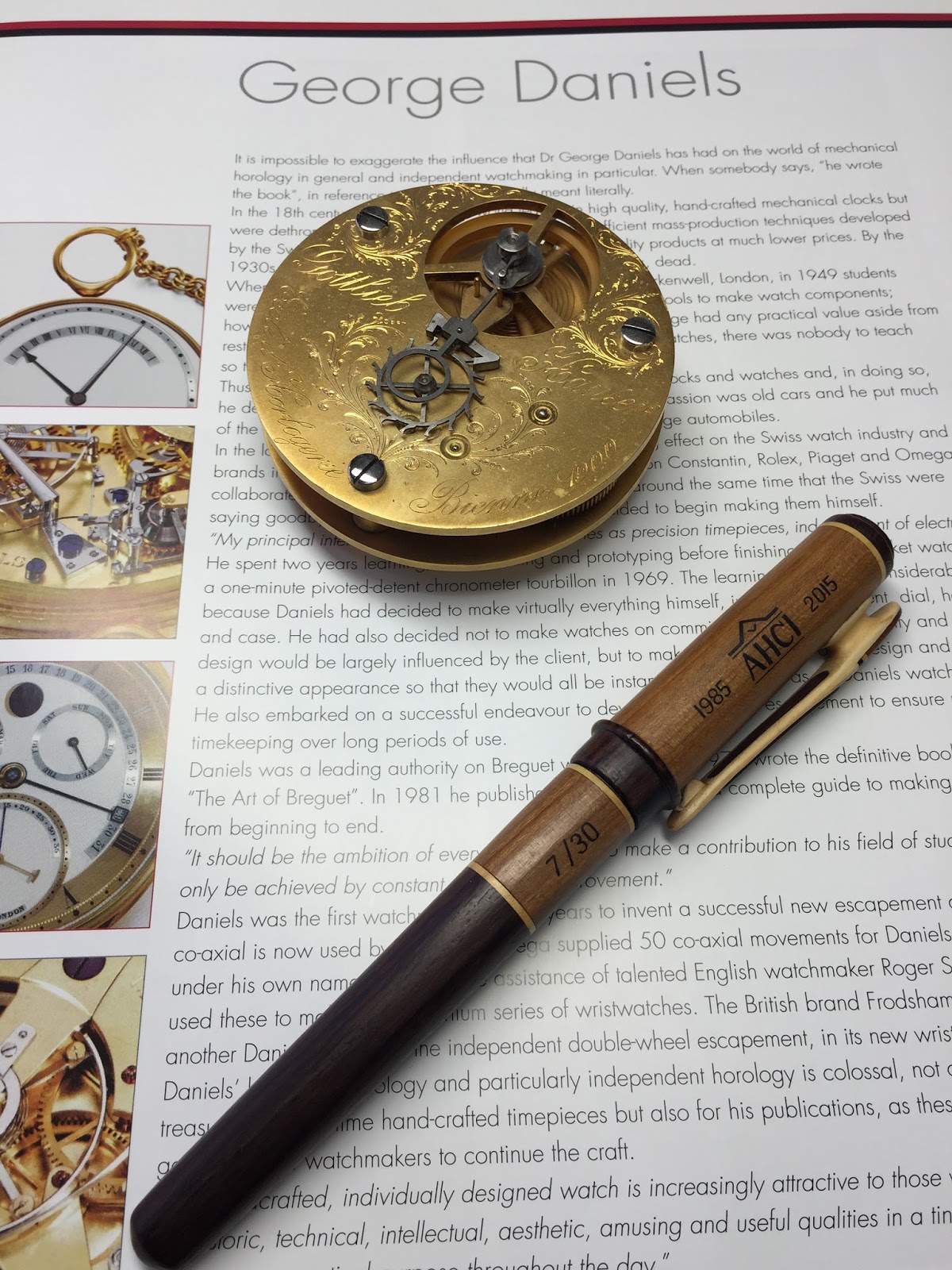
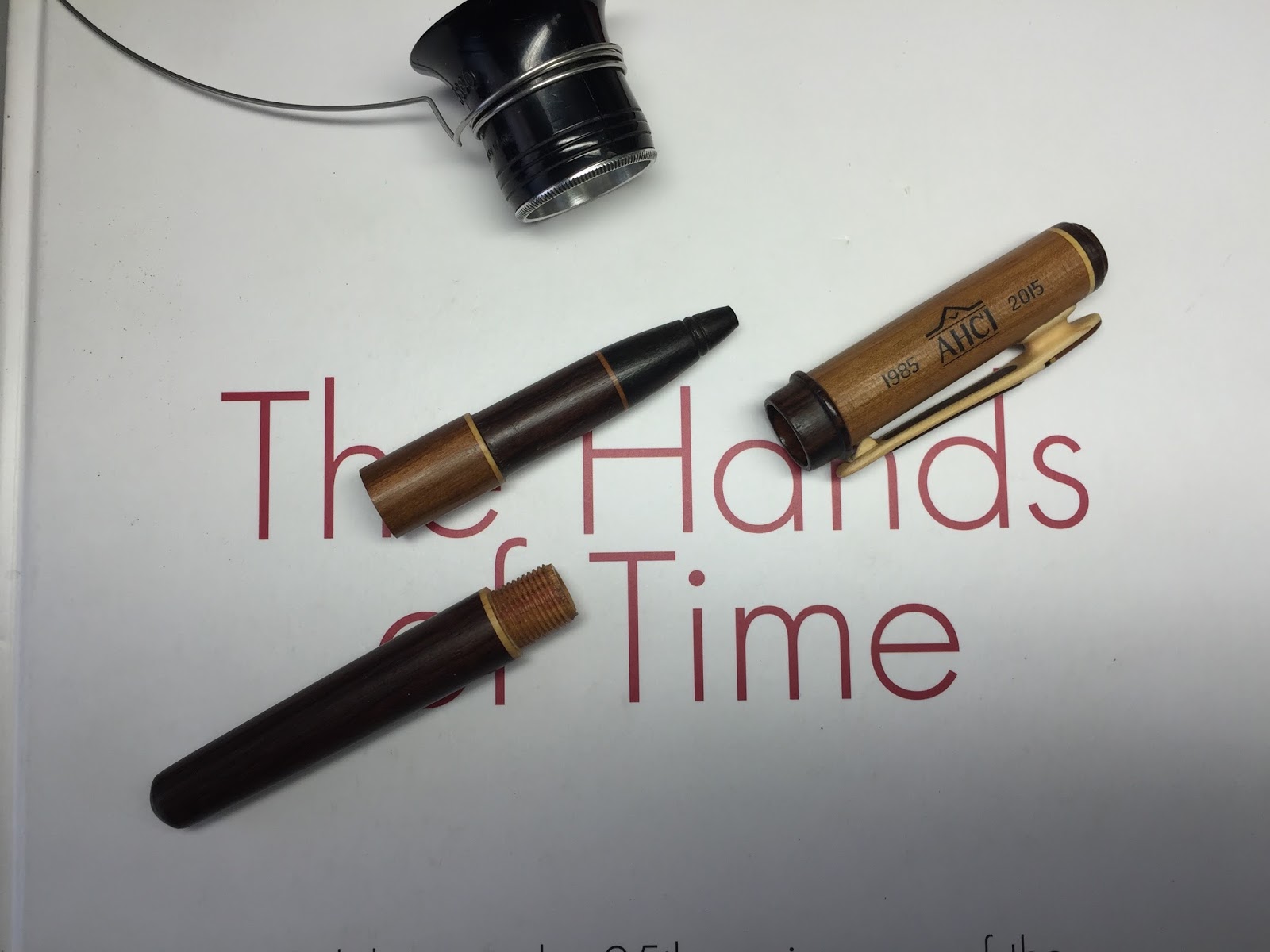

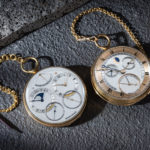
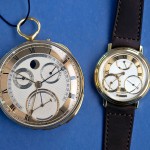

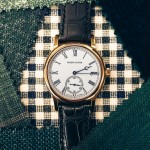


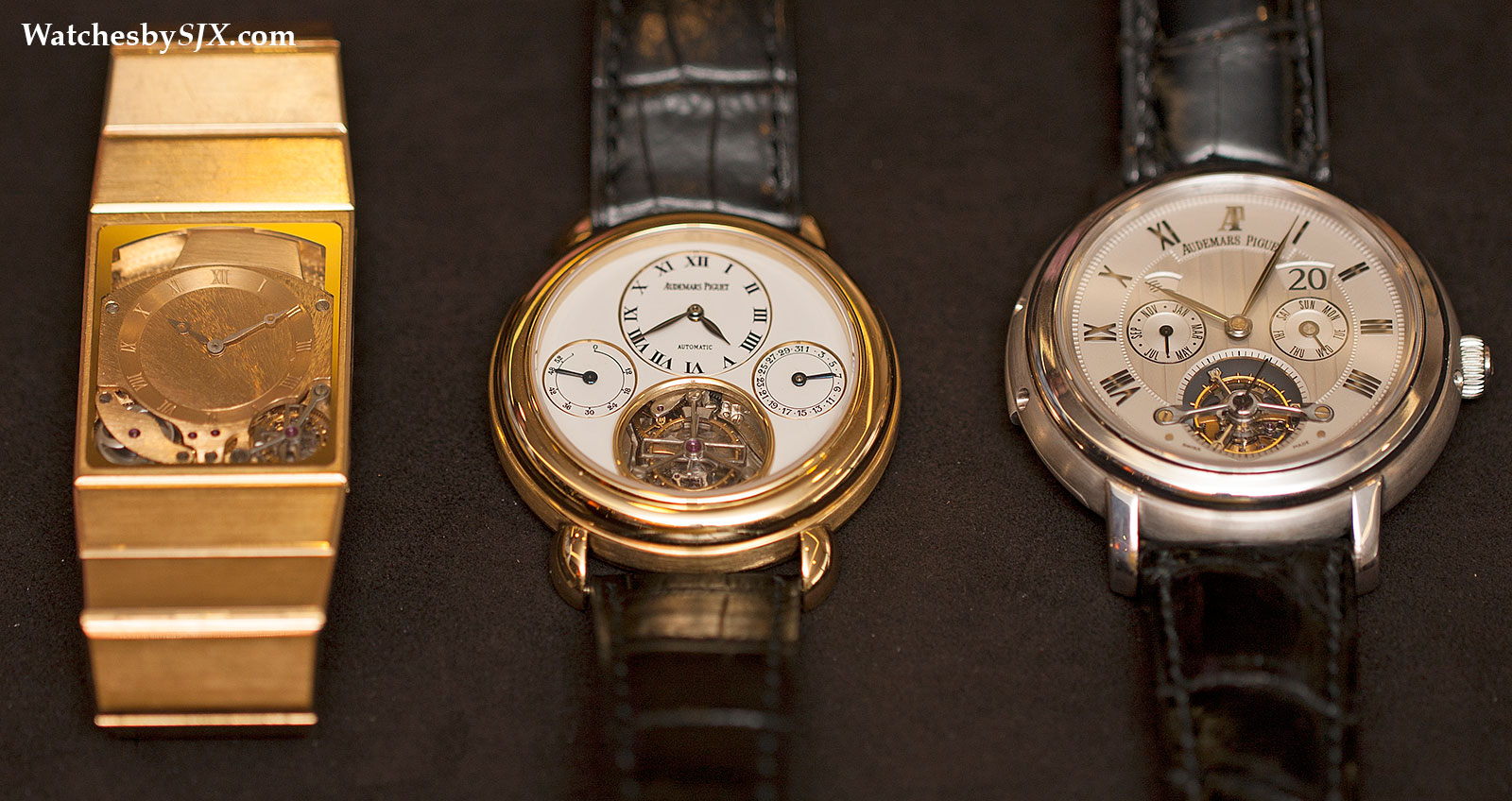











.jpg)


